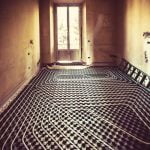When it comes to homeownership, one often overlooked aspect is the potential capital gains tax on home improvements. These taxes can significantly impact your financial returns and may deter some homeowners from undertaking necessary renovations. However, by gaining a better understanding of capital gains and implementing strategic planning, you can minimize the tax burden associated with home improvements.
To begin, it’s essential to grasp the concept of capital gains. In simple terms, capital gains are the profits made when selling an asset, such as a home or real estate property. When homeowners make significant improvements to their property over time, they increase its market value.
This appreciation in value can trigger a higher tax liability when selling or transferring ownership of the property. Therefore, it becomes crucial to explore methods for lessening these capital gains taxes while still enjoying the benefits of home improvement projects.
Minimizing capital gains tax on home improvements is highly desirable for several reasons. First and foremost, it allows homeowners to retain more of their hard-earned money and maximize their return on investment.
Additionally, reducing capital gains tax can provide financial flexibility and ease the burden of taxation when transitioning into a new property or downsizing in retirement. By proactively planning ahead and taking advantage of available deductions, homeowners can ensure that their efforts to enhance their living space don’t come at an overly burdensome cost.
In this article, we will delve into various strategies that can help you lessen capital gains on home improvements effectively. We will explore key factors that influence these taxes, such as home value appreciation and length of ownership. Moreover, we will discuss eligible tax deductions for specific types of home improvements like energy-efficient upgrades or medical necessity modifications. We will also provide insights into proper documentation practices and organizational tips for efficient recordkeeping.
Throughout this article series, our aim is to empower homeowners with knowledge-based solutions that enable them to minimize capital gains tax effectively. By implementing tax planning strategies and seeking professional advice from tax experts or financial advisors, homeowners can confidently navigate the complex world of capital gains on home improvements and make informed decisions for their long-term financial well-being.
Key Factors Affecting Capital Gains on Home Improvements
When it comes to capital gains on home improvements, there are several key factors that can significantly impact the amount of tax you owe. By understanding these factors and taking them into consideration, homeowners can make informed decisions to minimize their capital gains tax liability.
One important factor that influences capital gains tax on home improvements is the appreciation in home value. If your home has appreciated in value since you purchased it, any improvements made may be subject to capital gains tax when you sell the property. It’s important to keep track of the appreciation in your home’s value over time and consider this when planning for improvements.
The length of ownership also plays a significant role in determining your tax liability. The general rule is that if you own and live in your primary residence for at least two out of the past five years before selling, you may be eligible for certain exemptions or exclusions from capital gains tax. However, if you have owned the property for a shorter period of time, or if it is not your primary residence, different rules may apply.
To take advantage of these key factors affecting capital gains on home improvements, homeowners should consider implementing strategic planning strategies. By focusing on priority areas that maximize potential tax benefits and carefully timing and sequencing home improvement projects, homeowners can lessen their overall tax liability.
- Keep track of your home’s value: Regularly monitor the appreciation in your home’s value as this will directly affect the amount of capital gains tax you may owe upon selling.
- Plan strategically: Identify areas in your home that offer maximum potential for increasing its value. Prioritize these areas when planning improvements to ensure optimal tax benefits.
- Time and sequence: Consider the timing and sequencing of your improvement projects so that they align with the expected date of sale. This approach allows you to spread out expenditures while minimizing potential taxation.
By following these key strategies and considering these factors affecting capital gains on home improvements, homeowners can take a proactive approach to minimize their tax liability and maximize their long-term financial benefits. However, it is recommended to consult with a tax professional or financial advisor specialized in real estate tax laws to ensure compliance with regulations and make well-informed decisions.
Eligible Tax Deductions for Home Improvements
One of the key ways to lessen capital gains on home improvements is by taking advantage of eligible tax deductions. Homeowners can potentially reduce their tax liability by deducting certain expenses related to their home improvements. This section will discuss various tax deductions available for homeowners making improvements and how they can maximize these deductions.
Qualified energy-efficient home improvement deductions are one type of deduction that homeowners can utilize. Energy-efficient upgrades such as installing solar panels, upgrading insulation, or replacing windows and doors with energy-efficient alternatives may qualify for federal tax credits. These credits can help offset the cost of the improvements and reduce the homeowner’s capital gains tax liability.
Another deduction to consider is medical necessity deductions for home modifications. If a homeowner makes modifications to their home to accommodate a medical condition or disability, they may be able to deduct these expenses. Examples of eligible modifications include building ramps, widening doorways, or installing accessible bathrooms. It’s important for homeowners to keep detailed records and documentation of these medical necessity expenses in order to properly substantiate the deductions during tax preparation.
In addition to these specific deductions, it’s also important for homeowners to keep track of all other eligible expenses related to their home improvements. These can include costs for materials, labor, permits, and professional services such as architect fees or contractor fees. By carefully documenting these expenses and keeping proper records, homeowners can maximize their eligible deductions and minimize their capital gains tax liability.
Overall, understanding the various tax deductions available for home improvements is crucial in lessening capital gains taxes. By taking advantage of qualified energy-efficient home improvement deductions and medical necessity deductions, homeowners can potentially significantly reduce their overall tax liability. Additionally, maintaining accurate records and documentation of all home improvement expenses ensures that homeowners are properly substantiating their deductions during tax preparation.
Planning Ahead
When it comes to minimizing capital gains tax on home improvements, strategic planning is essential. By being proactive and taking certain steps, homeowners can maximize tax benefits and reduce their overall tax liability. This section will discuss some key strategies for planning ahead and making home improvements with the goal of minimizing capital gains.
Priority Areas for Maximizing Tax Benefits
To effectively minimize capital gains tax, homeowners should prioritize certain areas of their property that offer the greatest potential for tax benefits. One such area is energy-efficient home improvements. Many jurisdictions offer tax deductions or credits for making upgrades that improve a home’s energy efficiency.
Examples include installing solar panels, upgrading insulation, or replacing windows and doors with more energy-efficient alternatives. By focusing on these types of improvements, homeowners can not only save on utility bills but also qualify for valuable tax deductions.
Another priority area to consider is home modifications made for medical necessity. These could include items such as wheelchair ramps, grab bars in bathrooms, or wider doorways to accommodate mobility aids.
In certain circumstances, homeowners may be able to deduct a portion of these expenses as medical deductions if they meet specific criteria laid out by the Internal Revenue Service (IRS). It’s important to consult a tax professional or financial advisor familiar with real estate tax laws to ensure eligibility requirements are met before proceeding with these types of modifications.
Timing and Sequencing of Home Improvement Projects
In addition to prioritizing specific areas for tax benefits, timing and sequencing home improvement projects can also play a role in minimizing capital gains tax. If homeowners are considering selling their property in the near future, it may be advantageous to complete high-impact renovations early on during ownership.
This way, any appreciation resulting from these improvements can be held longer than one year before selling the property, thus qualifying for long-term capital gains rates which are typically lower than short-term capital gains rates. On the other hand, if a homeowner plans to hold onto their property for an extended period, they may want to spread out improvements over time to maximize the potential tax benefits throughout their ownership.
By carefully planning and strategically implementing home improvements, homeowners can significantly lessen their capital gains tax burden. It is important to keep in mind that tax laws and regulations can change over time, so it’s advisable for homeowners to consult with a tax professional or financial advisor who specializes in real estate taxes. Taking a proactive approach and seeking professional guidance will ensure homeowners make well-informed decisions that align with their long-term financial goals.
Consult with a Tax Professional or Financial Advisor
Consulting with a tax professional or financial advisor is crucial when it comes to navigating capital gains tax on home improvements. The complexities of tax laws and regulations surrounding real estate make it essential to seek professional guidance in order to make informed decisions and maximize potential tax benefits.
A qualified tax professional or financial advisor knowledgeable in real estate tax laws can provide valuable insights and strategies for minimizing capital gains tax. They can help homeowners understand the various factors that may affect their tax liability, such as the length of ownership and home value appreciation. By assessing the homeowner’s specific situation, they can provide personalized recommendations on how to strategically plan home improvements to minimize capital gains.
In addition, a tax professional or financial advisor can assist homeowners in identifying eligible deductions for home improvements. For example, they can help determine if certain energy-efficient upgrades qualify for deductions. They can also guide homeowners on deducting home modifications made for medical necessity.
Furthermore, consulting with a professional can ensure that homeowners properly document their home improvement expenses and maintain accurate records. This is important as proper documentation is necessary to substantiate capital gains tax deductions. A tax professional or financial advisor can offer organizational tips for efficient recordkeeping and proper tax preparation, helping homeowners stay compliant with tax regulations.
Overall, seeking professional advice empowers homeowners to navigate the complexities of capital gains tax on home improvements effectively. By working with a qualified expert, homeowners can make informed decisions, strategize their home improvements to maximize tax benefits, and avoid potential pitfalls and risks associated with improper reporting or deductions.
Utilizing 1031 Exchanges for Tax Benefits
1031 exchanges are a powerful tool for homeowners looking to minimize their capital gains tax liability when making home improvements. This section will explore what 1031 exchanges are, their relevance in reducing capital gains tax, and the benefits and eligibility criteria associated with implementing a 1031 exchange.
Introduction to 1031 Exchanges
A 1031 exchange, also known as a like-kind exchange, allows homeowners to defer paying capital gains tax on the sale of an investment property by reinvesting the proceeds into a similar property. While typically associated with real estate investments, 1031 exchanges can also be utilized for certain home improvement projects that meet the criteria set forth by the Internal Revenue Service (IRS).
Benefits and Eligibility Criteria
One of the main benefits of utilizing a 1031 exchange is the ability to defer paying capital gains tax on the sale of an investment property or certain eligible home improvement projects. By reinvesting the proceeds into another qualifying property, homeowners can potentially defer their tax liability indefinitely.
To be eligible for a 1031 exchange in relation to home improvements, certain criteria must be met. The improvements must be considered significant enough to qualify as “like-kind” properties under IRS guidelines. Additionally, there are specific rules regarding timing and sequencing of the exchange that must be followed in order to remain compliant with IRS regulations.
Real-Life Examples
Implementing a 1031 exchange for eligible home improvement projects can have substantial financial benefits. For example, let’s say a homeowner purchased a property for $200,000 and made $100,000 worth of qualifying improvements over time.
If they were to sell this property for $400,000 without utilizing a 1031 exchange, they would need to pay capital gains tax on the $300,000 profit ($400,000 – ($200,000 + $100,000)). However, by reinvesting the proceeds into another qualifying property through a 1031 exchange, they could potentially defer paying taxes on the $300,000 profit.
Understanding Home Improvement Documentation and Recordkeeping
Accurate and comprehensive documentation and recordkeeping are crucial when it comes to minimizing capital gains tax on home improvements. In this section, we will discuss the importance of maintaining proper records, the necessary documentation for substantiating capital gains tax deductions, and offer organizational tips for efficient recordkeeping.
Maintaining accurate records of all home improvement expenses is essential in reducing capital gains tax liability. When you decide to sell your property, having a clear and detailed record of the improvements made will help in calculating the adjusted basis of the property. This adjusted basis is then used to determine your capital gains or losses. By accurately tracking all expenses related to home improvements, you can maximize your deductions and minimize your overall tax liability.
To substantiate capital gains tax deductions, homeowners should keep copies of receipts and invoices for all materials, labor costs, and professional fees incurred during the home improvement process. Additionally, any permits or licenses obtained for construction projects should be retained as they serve as evidence for work done on the property. It is also advisable to take before-and-after photos to further support your claims.
Organizational tips can greatly assist in maintaining proper records for home improvements. Consider creating a dedicated folder or filing system where you can store all relevant documents in one place. You may also find it helpful to utilize spreadsheets or digital accounting software to track expenses efficiently. Regularly reviewing and updating your records will ensure that important details are not missed.
| Documentation Needed | Purpose |
|---|---|
| Copies of receipts and invoices | To validate material and labor costs |
| Permits or licenses | Evidence of work done on the property |
| Before-and-after photos | To support claims and show the extent of improvements |
Potential Risks and Pitfalls to Avoid
While the goal is to lessen capital gains on home improvements, it is essential for homeowners to be aware of potential risks and pitfalls that can arise during the process. By understanding these risks, homeowners can avoid common mistakes and ensure compliance with tax regulations. This section will highlight some of the risks and provide tips on how to navigate them effectively.
One common risk homeowners face when attempting to minimize capital gains tax is fraudulent reporting or improper deductions. It is important to note that intentionally falsifying information or inflating expenses can lead to serious legal consequences. The IRS has strict guidelines for reporting home improvement expenses, so it is crucial to act in accordance with these guidelines.
To avoid falling into this pitfall, homeowners should conduct due diligence and familiarize themselves with the IRS guidelines on capital gains and home improvements. It is highly recommended to consult with a qualified tax professional or financial advisor to ensure accurate reporting and deductions. They can provide valuable guidance in navigating complex tax laws related to home improvements.
Another risk that homeowners should be mindful of is maintaining accurate records of their home improvement expenses. Proper documentation is crucial for substantiating capital gains tax deductions. Homeowners should keep receipts, contracts, invoices, and any other relevant documents as evidence of the costs incurred for home improvements.
Organizational tips for efficient recordkeeping include creating digital copies of important documents and organizing them into folders based on categories such as date, type of improvement, and expense amount. By staying organized from the beginning, homeowners can save time during tax preparation and reduce the likelihood of missing any crucial documentation.
Conclusion
In conclusion, understanding and minimizing capital gains tax on home improvements is crucial for homeowners looking to maximize their financial benefits. By implementing the strategies discussed in this article, homeowners can empower themselves to lessen capital gains tax and save money in the long run.
One key factor that affects capital gains tax on home improvements is home value appreciation. Homeowners should be aware of how increases in their property’s value can impact their tax liability. By strategically timing and sequencing home improvement projects, homeowners can minimize their capital gains and potentially qualify for higher deductions.
Another important consideration is the length of ownership. The longer a homeowner holds onto a property, the more they may be eligible for deductions related to capital improvements. Proper recordkeeping and documentation are essential for substantiating these deductions and avoiding potential legal consequences.
Lastly, seeking professional advice from a tax professional or financial advisor is highly recommended when navigating capital gains tax on home improvements. These professionals can provide valuable guidance tailored to an individual’s specific situation and help them make informed decisions that will ultimately lead to financial benefits.
Frequently Asked Questions
What home improvements can reduce capital gains tax?
Certain home improvements can help reduce capital gains tax. For instance, if you make improvements that increase the basis of your property, such as adding a room or renovating the kitchen, the increased value of your property can reduce your overall capital gains when you sell it.
This is because capital gains tax is calculated based on the difference between the selling price and the adjusted basis of your property, so increasing the basis can potentially lower your taxable gain.
Do home improvements count towards capital gains?
In general, home improvements do not directly count towards capital gains. Capital gains are calculated based on the difference between the sale price of your home and its adjusted basis, which includes various factors such as purchase price and certain expenses related to buying or selling the property.
Home improvements typically increase the adjusted basis of your property rather than being considered as additional “capital gains.” However, by increasing the basis through home improvements, you may indirectly lower your capital gains when you eventually sell the property.
What costs can be offset against capital gains?
Various costs can be offset against capital gains when calculating taxes owed. These costs primarily include expenses incurred during the acquisition or sale of a property. For example, costs such as real estate agent commissions, legal fees for title transfers or sales contracts, surveys required for closing, and transfer taxes may be deductible against capital gains.
Additionally, if you made any substantial repairs or renovations before selling a property, these expenses may also be considered eligible costs that can offset capital gains. It’s important to note that not all expenses related to owning a home qualify for offsetting against capital gains and consulting with a tax professional is advisable to ensure accurate deductions are claimed when reporting your taxes.

I’m thrilled to have you here as a part of the Remodeling Top community. This is where my journey as an architect and remodeling enthusiast intersects with your passion for transforming houses into dream homes.





